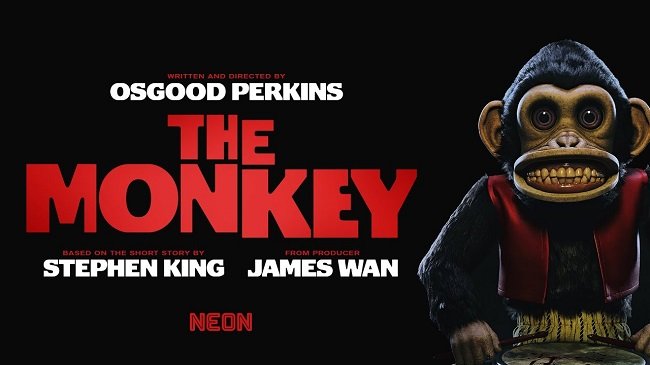The Keep (1983)
Michael Mann’s The Keep (1983) is a cinematic “curate’s egg” that often leaves viewers with mixed feelings. In visual terms, this supernatural horror film with science fiction overtones, is both striking and innovative. The sound design and soundtrack by Tangerine Dream are compelling but at the expense of the dialogue, which is often muffled and difficult to hear. Narratively, it is confusing and rushed. The editing further compounds this. The novel by F. Paul Wilson, upon which it is based, blends elements of gothic horror and classic vampire themes and juxtaposes them with the horror of World War II and the evils of the Schutzstaffel (SS). Mann has removed the traditional cinematic trappings associated with the “undead” and instead presents us with a stylised, science fantasy story in which the antagonist is a supernatural entity that feeds on evil. However, due to The Keep having a troubled production and last-minute re-editing, much of the film’s dramatic and narrative substance has been lost along the way. What remains is intriguing but flawed.
In 1941 in Romania, Captain Klaus Woermann (Jürgen Prochnow), arrives with his unit at an uninhabited castle, known locally as “the Keep”, located in the Dinu Pass of the Carpathian Mountains. The building is maintained by villagers, Alexandru and his two sons, who are paid from a longstanding trust fund. The interior of the “the keep” has numerous cross shaped icons made of nickel, embedded in the wall. One night two soldiers seeking hidden treasure remove one of the stone blocks in the wall, releasing an entity that kills them. After more subsequent deaths Woermann requests reinforcements but is shocked when SS officer, Erich Kaempffer (Gabriel Byrne), arrives with a detachment of his commandos. Kaempffer, ignores the supernatural nature of the deaths and suspects partisans. Local village priest, Father Mihail Fonescu (Robert Prosky), suggests the Germans consult the historian, Theodore Cuza (Ian McKellen), who has studied “the keep” in the past.
Filmed on location in Wales and at Shepperton Studios during late 1982, The Keep suffered several problems both during production and postproduction. Unseasonal weather damaged several sets thus delaying filming and adding to the budget. Then special effects supervisor Wally Veevers died before completing his work on the film. Veevers specialised in optical effects, often using bespoke equipment and techniques only known to him. Paramount Pictures refused to pay any additional costs to find an alternative and so his absence meant that many effects shots couldn’t be completed and had to be cut from the film. Then there were further problems while editing The Keep. Mann’s final cut was 210 minutes, featuring a great deal more character development and plot exposition. The studio naturally balked at what they regarded as a horror film being so long. So, Mann edited a second version which ran 120 minutes. Sadly, this was not well received by test audiences and so the studio took control and produced a rushed, final edit of 96 minutes.
It is this theatrical version which leaves so many viewers bemused. It is self-evident within the first 10 minutes of The Keep, that this is not a typical gothic themed, vampire horror film. Mann’s modern visual aesthetic, which we previously saw in his 1981 film Thief, is amped up here. Director of cinematography Alex Thomson (Excalibur and Legend) has a keen eye for contrasting colours as well as brightly backlighting characters and key scenes. Then there’s the pulsing electronic soundtrack by German band, Tangerine Dream, which utilises revised material from several of their previous albums. Hence, the film may well be set in 1943 but it has a very contemporary, industrial look and sound. Furthermore, the makeup and animatronics by Nick Malley along with Wally Veevers visuals effects avoid standard horror tropes. Blood and gore is replaced by desiccation. Wooden stakes through the heart with lasers.
Sadly, the last-minute re-edit renders many scenes incomplete, and the characters often appear to act with little or no clear motivation, due to the amount of material removed. Sir Ian McKellen’s performance as Dr. Cuza remains strong but sadly Alberta Watson as his daughter Eva and the criminally underrated Scott Glenn as Glaeken Trismegestus have their roles cut to a minimum. Many secondary plotlines are also lost in the theatrical edition of The Keep. Who exactly is Glaeken and why does Eva fall in love with him so quickly. What power does he have over her? Then there is the matter of the way the evil released inside “the keep” spreads to the village, like a disease and the locals soon start to turn on each other. It is worth noting that the author did not like Michael Mann’s interpretation and in 2006 collaborated with artist Matthew Dow Smith to produce a graphic novel version he felt was closer to his work.
The Keep was a commercial failure upon release, although it did garner praise for its visual aesthetics. Over the years, various interviews with those that worked on the film have raised a lot of interest among film fans. Sadly, there has yet to be a Blu-ray release of The Keep, although DVD copies remain in circulation. Occasionally, cable channels show a TV version of the film with a slightly different ending. However, director Michael Mann appears to have no interest in revisiting the film and producing a new edit closer to his original vision. Mann has indicated that the climactic battle in which the Nazis are killed off was indeed shot but lacked the required special effects to complete the scene. Paramount has not confirmed whether this or` any other unused footage still exists. Hence it seems likely that The Keep will remain an interesting but flawed cinematic project. Yet even in its existing truncated version it can still make for fascinating viewing.




























